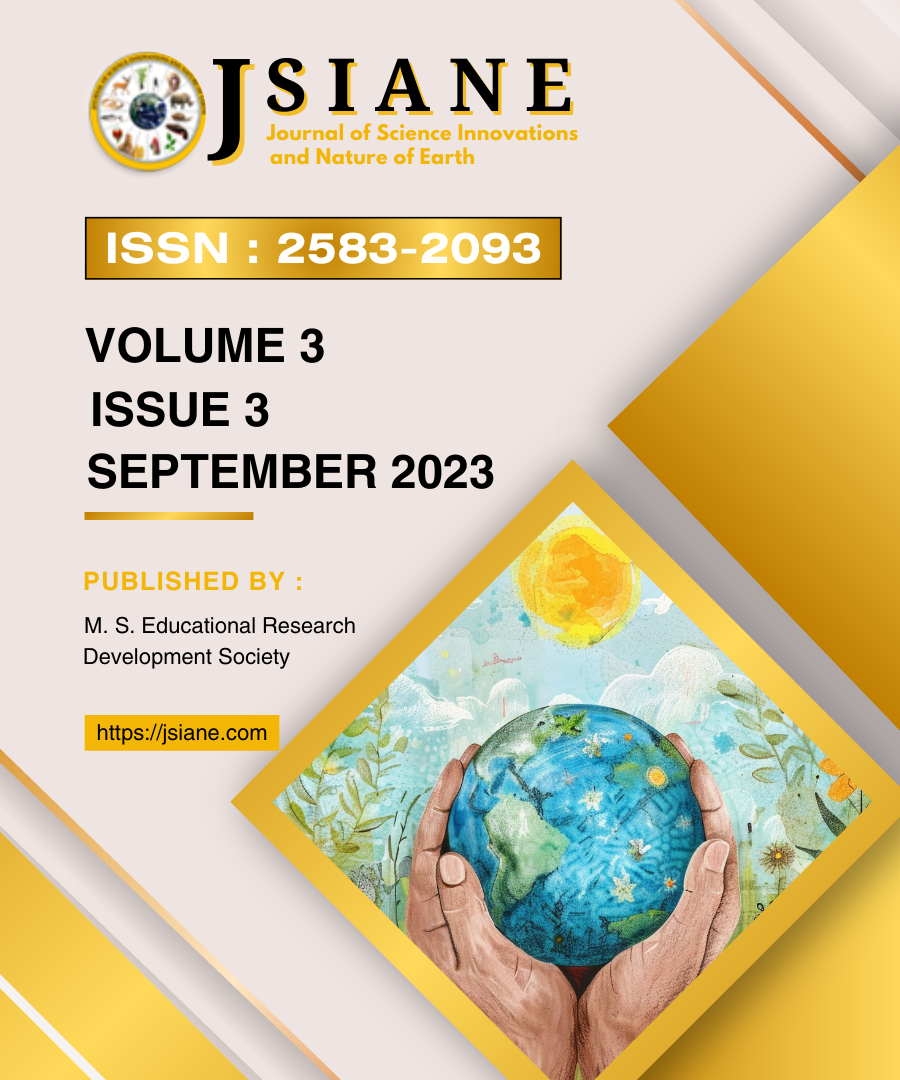Bioaccumulation of Synthetic Insecticides in Freshwater Fish Species
DOI:
https://doi.org/10.59436/jsiane.394.2583-2093Keywords:
Bioaccumulation, Synthetic insecticides, Freshwater fish, Organophosphates, Pyrethroids, AquaticAbstract
Synthetic insecticides, although vital for pest control in agriculture, pose a serious threat to aquatic ecosystems. Freshwater fish are particularly vulnerable due to prolonged exposure to pesticide residues that leach into water bodies. This study investigates the bioaccumulation of commonly used synthetic insecticides such as organophosphates and pyrethroids in various freshwater fish species. Field and laboratory analyses reveal a high bioaccumulation potential leading to physiological, biochemical, and behavioral changes in fish. These findings emphasize the need for stringent regulations on pesticide usage and effective water monitoring strategies.
References
Ansari, M. B., et al. (2021). Toxicological evaluation of pyrethroids in freshwater fish. Environmental Science and Pollution Research, 28(11), 13677–13689.
Authman, M. M., et al. (2015). Use of fish as bio-indicators in water pollution monitoring: A review. Egyptian Journal of Aquatic Research, 41(3), 258–270.
David, M., et al. (2012). Toxicity assessment of synthetic pyrethroids in fish. Ecotoxicology and Environmental Safety, 78, 180–186.
Kaviraj, A., & Gupta, N. (2004). Impact of pesticides on aquatic ecosystems. Ecotoxicology, 13(3), 285–296.
Köck-Schulmeyer, M., et al. (2017). Priority pesticide residues in European rivers. Science of the Total Environment, 599-600, 180–190.
Kumar, A., et al. (2019). Bioaccumulation of chlorpyrifos in freshwater fish. Toxicology Reports, 6, 884–890.
OECD. (2012). Test No. 305: Bioaccumulation in Fish: Aqueous and Dietary Exposure. OECD Guidelines for the Testing of Chemicals.
Pal, R., et al. (2020). Risk assessment of pesticide residues in fish from agricultural zones. Chemosphere, 248, 126008.
Pandey, S., et al. (2011). Histopathological changes in gills of fish exposed to chlorpyrifos. Journal of Cell and Tissue Research, 11(1), 2675–2679.
Ramesh, M., et al. (2019). Sub-lethal toxicity and oxidative stress in fish exposed to synthetic insecticides. Aquatic Toxicology, 211, 83–90.
Sharma, A., et al. (2018). Pesticide residue analysis in fish from the Yamuna River. Environmental Monitoring and Assessment, 190(9), 555.
Sinha, N., et al. (2016). Behavioral effects of pesticide exposure in freshwater fish. Environmental Toxicology and Chemistry, 35(7), 1775–1782.
Verma, S., et al. (2022). Advanced analytical tools for pesticide residue analysis in aquatic biota. TrAC Trends in Analytical Chemistry, 145, 116484.
Aktar, M. W., Sengupta, D., & Chowdhury, A. (2009). Impact of pesticides use in agriculture: their benefits and hazards. Interdisciplinary Toxicology, 2(1), 1–12.
Ali, D. et al. (2021). Impact of pesticide contamination on aquatic fauna. Ecotoxicology, 30(2), 145–154.
Stehle, S., & Schulz, R. (2015). Agricultural insecticides threaten surface waters at the global scale. PNAS, 112(18), 5750–5755.
Rashed, M. N. (2001). Monitoring of environmental heavy metals in fish from Nasser Lake. Environmental International, 27(1), 27–33.
Fulton, M. H., & Key, P. B. (2001). Acetylcholinesterase inhibition in estuarine fish and invertebrates as an indicator of organophosphorus insecticide exposure and effects. Environmental Toxicology and Chemistry, 20(1), 37–45.
Siegfried, B. D. (1993). Comparative toxicity of pyrethroid insecticides to freshwater and estuarine fish. Environmental Toxicology and Chemistry, 12(9), 1683–1689.
Velisek, J., et al. (2019). Effect of cypermethrin on fish behavior and physiology. Environmental Toxicology and Pharmacology, 66, 23–29.
Kumar, R., et al. (2020). Pesticide residues in freshwater fish: A case study from the Ganga river system. Ecotoxicology and Environmental Safety, 195, 110489.
Jayaraj, R., Megha, P., & Sreedev, P. (2016). Organochlorine and organophosphate pesticides—Toxicity and health effects. Interdisciplinary Toxicology, 9(3), 90–100.
Mishra, A. K., & Mohanty, B. (2018). Histological damage in fish due to pesticide exposure. Environmental Monitoring and Assessment, 190(3), 173.
Henry, T. B., et al. (2004). Factors affecting bioaccumulation and elimination of pesticides in fish. Aquatic Toxicology, 68(1), 61–71.
Pandey, G., & Nagpure, N. S. (2018). Pesticide bioaccumulation and histological damage in fish. Fish & Shellfish Immunology, 75, 207–214.
Varó, I., et al. (2020). Neurotoxicity of organophosphates in aquatic vertebrates. Chemosphere, 252, 126506.
USEPA. (2017). Pesticide toxicity database and risk evaluation. U.S. Environmental Protection Agency.
Tilak, K. S., et al. (2007). Toxicity and bioaccumulation of pesticides in freshwater fish. Journal of Environmental Biology, 28(2), 201–207.
Velmurugan, B., et al. (2009). Bioaccumulation and sublethal toxicity of deltamethrin in Labeo rohita. Pesticide Biochemistry and Physiology, 94(3), 232–237.
Downloads
Published
Issue
Section
License
Copyright (c) 2023 Maharaj Singh Educational Research Development Society

This work is licensed under a Creative Commons Attribution-NonCommercial 4.0 International License.










